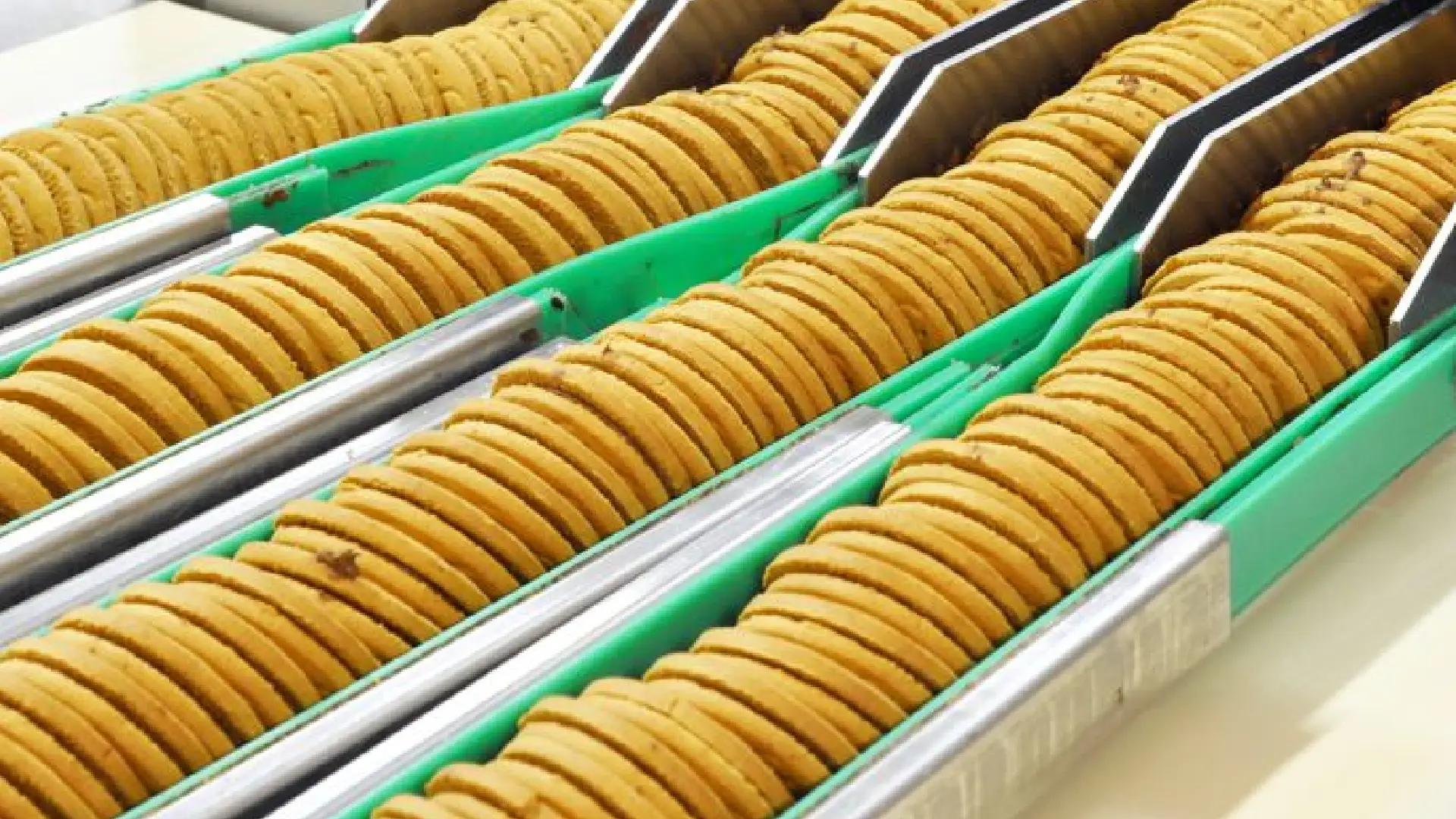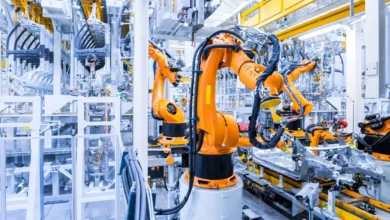
In the competitive landscape of the bakery industry, understanding the intricacies of the biscuit production line is pivotal for any operation aiming for efficiency and perfection in their output. This comprehensive guide is designed to illuminate the variegated components and operational mechanisms that constitute a modern biscuit production line.
From the initial stages of dough preparation to the nuanced processes of baking, cooling, and packaging, each step plays a crucial role in ensuring the final product meets the highest standards of quality and taste. In addition, advancements in technology and automation have further enhanced the capabilities of these production lines, enabling higher throughput with consistent results.
Our exploration will provide you with the essential knowledge required to master the art and science of biscuit making, setting a foundation for success in the bakery business. Welcome To Our Biscuit Production Line Factory!
What Equipment is Essential for a Biscuit Production Line?
Choosing the Right Oven for Your Biscuit Line
Selecting the appropriate oven for your biscuit production line is critical, as it directly impacts baking efficiency, product consistency, and energy consumption. There are several types of ovens employed in biscuit baking, notably direct gas-fired (DGF), indirect gas-fired (IGF), and convection ovens. DGF ovens, known for their precise heat control and efficient baking, are suitable for a wide range of biscuit types.
IGF ovens, on the other hand, use a heat exchanger to heat the baking chamber, providing uniform heat distribution and reducing the risk of product contamination. Convection ovens, which circulate hot air throughout the baking chamber, are excellent for achieving even baking and are especially beneficial for delicate products.
Differentiating Between Moulders and Cutters for Various Biscuit Types
Moulders and cutters are pivotal in shaping biscuits, yet they cater to different product characteristics and textures. Moulders work best with soft doughs, imprinting designs or shapes as the dough passes through engraved rollers or formed plates.
This method is ideal for producing biscuits with intricate patterns or textures. Cutters, conversely, are employed to handle harder doughs, cutting the dough into shapes with precise edges and uniform sizes. The choice between a moulder and a cutter depends on the desired end product’s texture and appearance.
Understanding the Role of Forming Machines in Cookie and Cracker Manufacturing
Forming machines are essential in the cookie and cracker manufacturing process, providing the flexibility to produce a variety of shapes, sizes, and textures. These machines typically use extrusion, wire-cutting, or rotary moulding techniques to form the dough before baking.
Extrusion forming machines force the dough through a die to create specific shapes and can be adjusted to control the size and thickness of the product. Wire-cutting machines are excellent for cookies with inclusions, such as chunks of chocolate or nuts, dropping the dough onto the baking conveyor in precise portions.
Rotary moulders, similar to moulders in biscuit production, are particularly effective for short doughs and crackers, offering consistency and detailed patterning on the product surface. Understanding the specific capabilities and applications of each forming machine type is crucial in achieving the desired product attributes while maximizing production efficiency.
How to Optimize Your Biscuit Production for Efficiency and Quality
Automating Your Biscuit Production Line for Increased Productivity
Implementing automation in your biscuit production line can significantly enhance productivity and ensure a consistent product quality. Automated systems can streamline various production stages, from dough mixing to packaging, minimizing manual interventions and human error.
Such systems are designed to manage consistent dough feeding, precise weight measurements, and uniform forming and baking, which are crucial for maintaining product standards. Automation also allows for better scalability of production, meeting increased demands without compromising quality. By investing in automation, manufacturers can achieve more efficient use of resources, reduce waste, and improve overall operational efficiency.
Key Factors in Maintaining Oven’s Consistency for Perfect Biscuits Every Time
Maintaining oven consistency is pivotal in producing perfect biscuits. Key factors include temperature control, airflow, and baking time. An oven’s temperature must be uniformly distributed to ensure even baking. Inconsistent heat can result in uneven color and texture.
Airflow is another critical element; proper ventilation helps in moisture removal and achieves the desired crispiness. Baking time must be precisely managed to prevent under or overbaking. Utilizing advanced oven technology with real-time monitoring and adjustments can greatly enhance consistency, leading to superior product quality batch after batch.
The Importance of Dough Consistency in Soft and Hard Biscuit Production
Achieving the right dough consistency is essential for both soft and hard biscuit production. For soft biscuits, the dough should be lighter and more aerated, requiring careful control of ingredients and mixing time to incorporate more air.
On the other hand, hard biscuits require a denser, less hydrated dough to achieve their characteristic crunch. Consistency in dough preparation ensures that biscuits maintain their intended texture, shape, and flavor. Monitoring ingredient quality, temperature, and mixing techniques are crucial steps in maintaining dough consistency, ultimately affecting the final product’s appeal and consumer satisfaction.
Exploring the Various Types of Biscuits You Can Produce
Soft Biscuit Production Line vs. Hard Biscuit Production Line: What’s the Difference?
The production lines for soft and hard biscuits exhibit significant differences tailored to the distinct requirements of each biscuit type. The soft biscuit production line is designed to handle a lighter, more aerated dough.
It often includes specialized mixing and aeration equipment to incorporate air into the dough, coupled with baking technologies that preserve the dough’s moisture content, ensuring softness. Conversely, the hard biscuit production line focuses on achieving a denser, crisper product. This involves longer baking times, higher temperatures, and often, unique laminating processes to create the desired texture.
Adapting Your Line for Specialty Biscuits: Sandwich Biscuits and Crackers
When diversifying production to include specialty biscuits such as sandwich biscuits and crackers, adaptation and flexibility in the production line become crucial. For sandwich biscuits, additional layers of complexity are introduced with the filling application and assembly. This requires precise control mechanisms for depositing fillings and careful handling to maintain product integrity.
Cracker production, on the other hand, often demands a more robust dough handling capability to manage the denser, lower moisture doughs typical of crackers. Both specialty types may necessitate modifications in cutting, baking, and cooling techniques, underscoring the importance of a versatile production line capable of producing a wide range of biscuit types with consistent quality.
Choosing the Right Supplier for Your Biscuit Production Equipment
What to Look for in a Biscuit Machinery Supplier
Selecting the right supplier for your biscuit production equipment is a critical decision that impacts the quality, efficiency, and innovation potential of your manufacturing processes. An ideal supplier should offer a comprehensive range of machinery that encompasses the entire biscuit production spectrum, from mixing to packaging.
Key factors to consider include the supplier’s reputation for reliability, their commitment to technological advancement, and the after-sales support offered. A supplier with a strong research and development (R&D) focus can provide guidance on optimizing production processes and implementing the latest technologies.
Additionally, evaluating the supplier’s ability to customize machinery to fit specific production needs and constraints is essential for achieving optimal performance.
The Benefits of Complete Biscuit Production Lines from Verified Suppliers
Procuring complete biscuit production lines from verified suppliers offers numerous advantages. Firstly, it ensures equipment compatibility, streamlining the production process and reducing the risk of operational bottlenecks. Integrated control systems offer simplified management and monitoring of the production line, leading to enhanced efficiency and product quality.
Verified suppliers also guarantee compliance with international safety and quality standards, protecting both the end product and the production workforce. Furthermore, such suppliers often provide comprehensive training and technical support, facilitating smooth operation and maintenance of the equipment.
Scaling Your Biscuit Production: From Small Bakery to Industrial Scale
Transitioning to a Fully Automatic Biscuit Production Line
Transitioning to a fully automatic biscuit production line is a pivotal step for manufacturers aiming to scale their operations from a small-scale bakery to an industrial level. This move not only enhances production efficiency but also significantly reduces manual labor costs, errors, and inconsistencies in product quality.
A fully automated line ensures precise ingredient mixing, dough forming, baking, and packaging, which can be adjusted and monitored for optimal output. To prepare for this transition, manufacturers must assess current production levels, projected growth, and the specific requirements for automation technology that aligns with their expansion goals.
Calculating Production Capacity Needs for Future Growth
Accurately calculating production capacity needs is critical when scaling biscuit production. This involves analyzing current demand, market trends, and growth projections to determine the required production volume. Factors such as seasonal demand fluctuations, potential market expansion, and product diversification should be included in capacity planning.
This foresight enables manufacturers to select equipment and technologies that not only meet current needs but are also scalable for future expansion, ensuring long-term viability and competitiveness in the market.
Key Considerations in Selecting a Tunnel Oven for Larger Capacities
When scaling production to larger capacities, selecting the appropriate tunnel oven becomes crucial. The tunnel oven is the heart of the biscuit baking process, influencing product quality, efficiency, and energy consumption.
Key considerations include the oven’s baking efficiency, temperature uniformity, belt width, and length, which must be compatible with the planned production volume. Energy source options (e.g., gas, electric, or hybrid ovens) and their operational costs, alongside the oven’s adaptability to different biscuit types, are also vital.
Additionally, advanced features such as automated temperature control and belt speed adjustments can further enhance product consistency and throughput, making the selection of a tunnel oven a strategic decision in the scale-up process.
The Future of Biscuit Making: Emerging Technologies to Watch
How Smart Equipment is Revolutionizing Biscuit Production Lines
In the evolving landscape of biscuit manufacturing, the integration of smart equipment signifies a transformation towards more efficient, precise, and flexible production lines. Advances in Internet of Things (IoT) technology allow for real-time monitoring and control of manufacturing processes, enabling manufacturers to optimize production parameters quickly and respond to quality issues with unprecedented speed.
Automated robotic systems are being implemented to handle delicate operations such as dough handling, shaping, and packaging, reducing human error and increasing consistency across batches. Additionally, artificial intelligence (AI) and machine learning algorithms are facilitating predictive maintenance, where equipment can alert operators about potential failures before they occur, significantly reducing downtime and enhancing overall productivity.
These emerging technologies not only streamline operations but also pave the way for innovation, allowing manufacturers to experiment with new biscuit shapes, textures, and ingredients with greater agility.

















